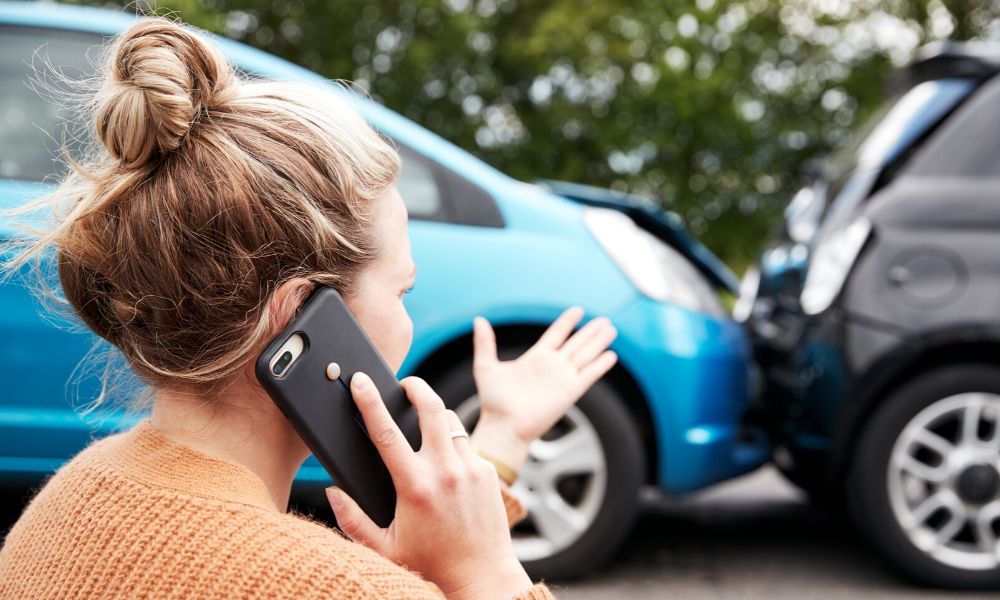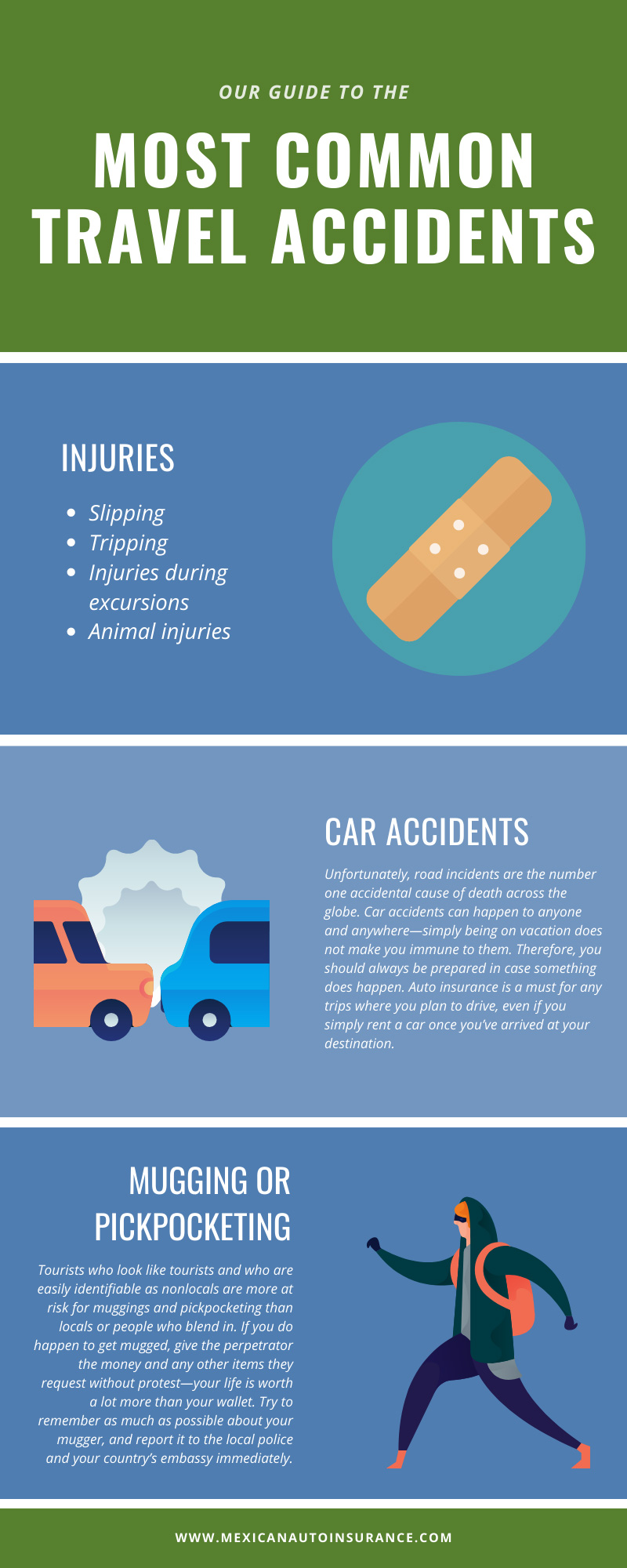
You may think bad things can’t happen to you when you’re traveling. However, so many people fall victim to accidents during their travels, and unfortunately they usually aren’t as prepared as they could’ve been. Knowing how to deal with the issues that often arise for travelers is always a safe bet. A “just-in-case” option is usually quite affordable, and the peace of mind it provides is immeasurable. Figuring out which accidents to prepare for can be difficult, so use our guide to the most common travel accidents to prepare for your trip and to handle anything that may come your way with ease.
Injuries
People can get injured in many ways while they’re traveling. Injuries can ruin a trip, and they may even leave permanent damage in severe cases. Here are some of the most common injuries that people sustain on vacation.
Slipping
Slipping on a wet or damp surface is very common for travelers. Be wary of where you step, especially at communal pools and beaches, as many surfaces there could be slippery and cause you to fall. Furthermore, people often like to wear unsupportive shoes such as flip-flops while they’re on vacation. These are great beach shoes, but consider bringing tennis shoes or another pair of shoes with good grip to wear when you’re not frolicking on the beach.
Tripping
Tripping and falling are also common accidents that happen to travelers, and they can result in injuries similar to those that result from slipping. You’re in a new terrain—you don’t know the cracks, bumps, and turns yet. Maybe your rental property has a trick stair you didn’t know about, or maybe the sidewalks are made of cobblestone and you’re not used to walking on such a bumpy surface. To avoid tripping, pay close attention to your surroundings at all times. Walk cautiously and carefully around new or uneven surfaces.
Injuries during excursions
Many people like to leave their hotels and experience the foreign place they’ve traveled to. Many excursions, such as jet skiing and parasailing, are all thrilling—yet dangerous—activities. While the chances of injury are low when you book these excursions through a reputable company with good customer reviews, they can still happen.
Animal injuries
Foreign animals may look cute, but they can also pack a punch. Many tourists try to take photos with foreign animals, who then become frightened or aggressive and end up injuring the person. You never know what wildlife may be like in other places, so it’s best to steer clear of the local animals. Pay close attention to how local people interact with the animals, if at all, and note how you should handle an encounter. For example, if you’re vacationing in Costa Rica, where howler monkeys abound, you should follow suit if you notice that the local population generally ignores them.
Car accidents
Many families decide to drive to their destinations in order to spend extra time together, to save money on flights, and for the convenience of having a car on vacation. Some people who travel abroad also rent cars when they arrive at their foreign destinations. Unfortunately, road incidents are the number one accidental cause of death across the globe. Car accidents can happen to anyone and anywhere—simply being on vacation does not make you immune to them. Therefore, you should always be prepared in case something does happen. Auto insurance is a must for any trips where you plan to drive, even if you simply rent a car once you’ve arrived at your destination. Furthermore, you may have to purchase special vehicle insurance if you’re going to be driving in a different country. For example, if your family takes an annual Mexico trip, you may need to invest in annual Mexican auto insurance to protect yourself, your family, and your car during your travels.
Another thing you can do to prevent issues while driving you’re abroad is to look up the local driving laws. The United States uses imperial units of measurement, but most of the rest of the world works with the metric system. Familiarize yourself with conversions from one to the other—when you see 60 kph on a speed limit sign, you should be able to easily and quickly know that means you can only go about 37 mph.
Mugging or pickpocketing
Tourists who look like tourists and who are easily identifiable as nonlocals are more at risk for muggings and pickpocketing than locals or people who blend in. Here are some quick tips on how to not look like a tourist while you’re traveling:
- Put your map away. If you must look at a map to avoid getting completely lost and stumbling into a bad part of town by accident, try using the maps on your phone instead of a physical map. Chances are, you won’t be the only person on the street to stop walking, pick up their phone, and stare at it for a while. You’ll blend in much better this way than if you were to use a paper map.
- Walk confidently. If you walk confidently enough, nobody will be able to tell you’re halfway lost. Walk with a purpose, and try to be as nonchalant as possible when you’re looking around for street names so that you don’t draw attention. Be careful who you ask for directions, too.
- Leave the luggage at your lodging. Don’t lug your suitcase or overnight bag around all day simply because you forgot to bring a small backpack. Carrying around an excessive number of items increases your risk of being mugged or pickpocketed.
If you do happen to get mugged, give the perpetrator the money and any other items they request without protest—your life is worth a lot more than your wallet. Try to remember as much as possible about your mugger, and report it to the local police and your country’s embassy immediately.
As you can see, traveling involves many potential risks for injuries that could derail the trip you so carefully planned. To prepare for any injuries that might occur while you travel, you should consider investing in a traveler’s medical insurance program. Lewis and Lewis has a fine selection of insurance packages to meet your needs, and we provide quotes free of charge.



